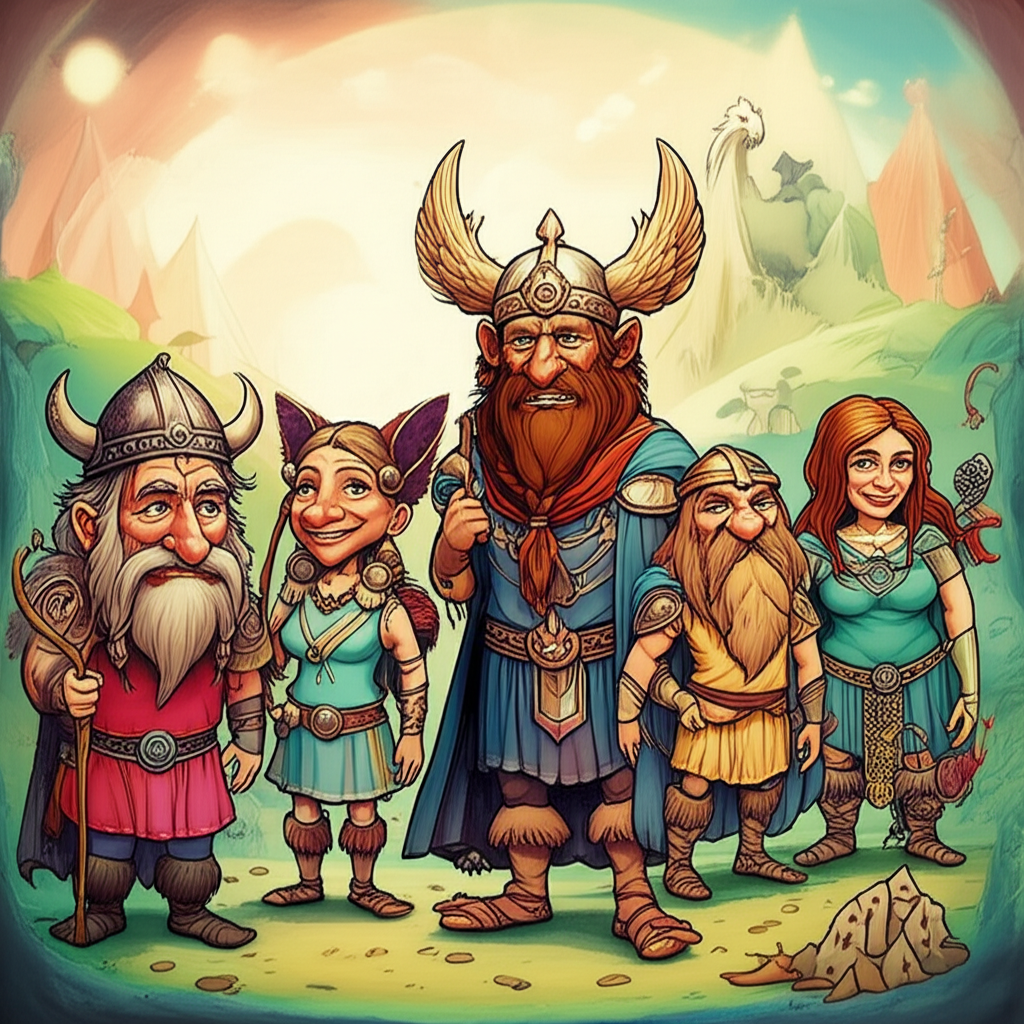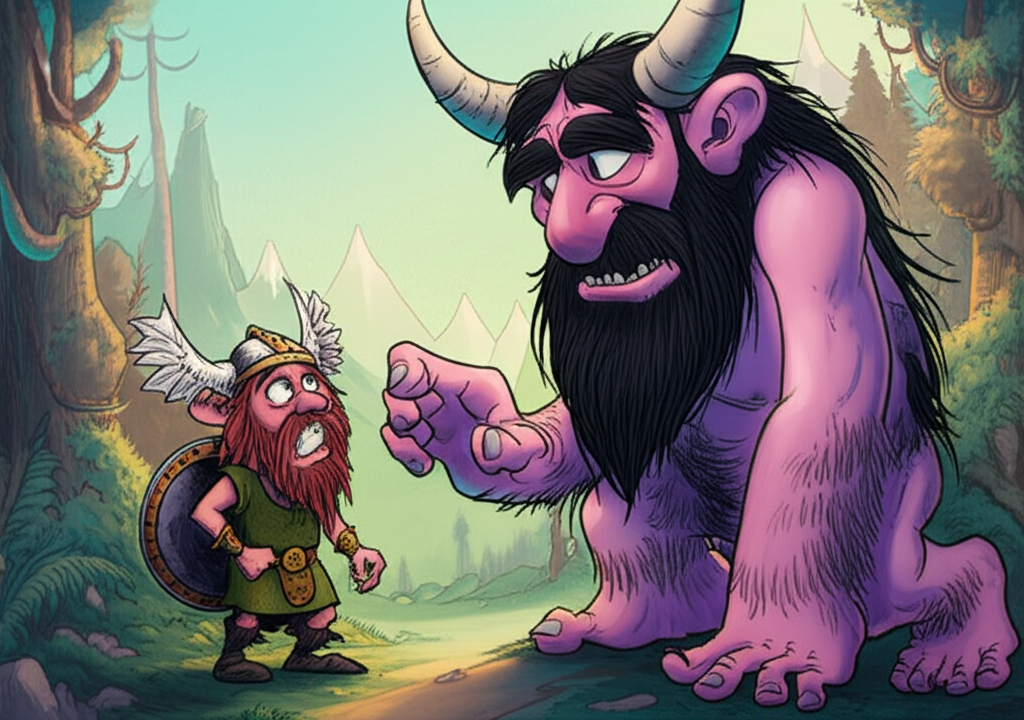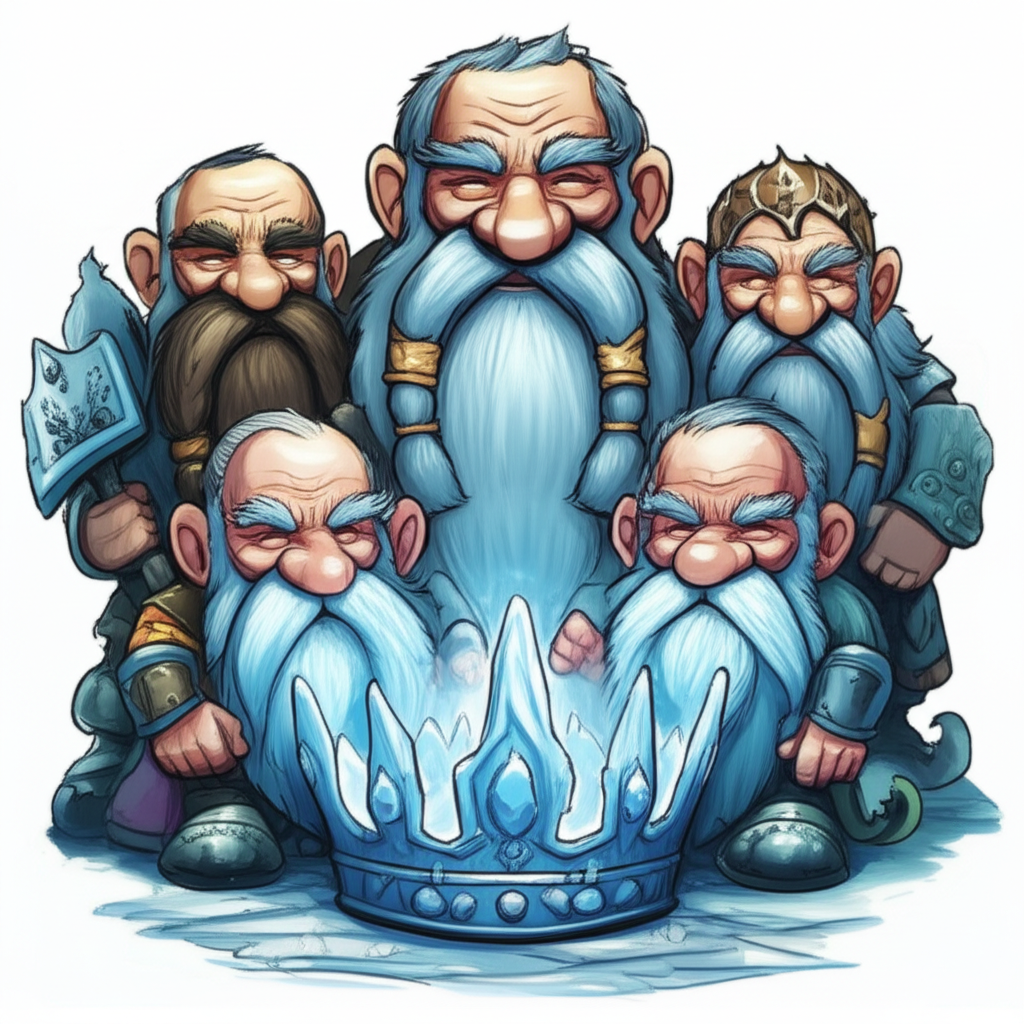
The tale of the Aesir-Vanir War is a foundational narrative within Norse mythology, a rich tapestry of stories woven by the ancient Germanic peoples of Scandinavia and Northern Europe. These sagas and Eddas, passed down through generations, are not historical accounts in the modern sense, but rather traditional stories that offered ancient communities a framework for understanding their world, their gods, and their place within the cosmos. It is crucial to remember that these are myths, legends told by people long ago, not meant to be believed, worshipped, or practiced as truth today. Our exploration of this profound conflict and its resolution is purely for cultural, historical, and educational understanding.
Origins and Cultural Background: A World Shaped by Gods and Giants
The society that nurtured these myths was primarily agrarian, seafaring, and often engaged in warfare, particularly during the Viking Age (roughly 8th to 11th centuries CE). For these ancient Norsemen, the world was a vibrant, often perilous place, teeming with unseen forces and powerful beings. Their worldview was polytheistic, populated by a pantheon of gods and goddesses who governed various aspects of life, from war and wisdom to fertility and the sea. They believed in a cosmos divided into nine realms, connected by the world tree Yggdrasil, where gods, giants, elves, and humans all had their place.
Life was seen as cyclical, marked by seasons, harvests, and the inevitable flow of fate, or wyrd. The gods themselves were not always benevolent or infallible; they possessed human-like flaws, ambitions, and rivalries, reflecting the complexities of human experience. They were powerful forces to be respected and understood, but never absolute or unchallenged. These myths provided moral lessons, explained natural phenomena, and offered a sense of identity and purpose to a people living in a challenging, often beautiful, northern landscape. The Aesir-Vanir War, in particular, speaks to the very origins of their divine order, the reconciliation of disparate powers, and the establishment of a fragile peace.
The Vanir: Guardians of Fertility and Fortune
Central to the aftermath of this great war are the Vanir, a distinct tribe of deities often associated with fertility, prosperity, magic, and the sea. Unlike the warlike Aesir, who embodied order, sovereignty, and battle, the Vanir represented the bountiful, life-giving aspects of existence. While not "creatures" in the monstrous sense, they were powerful beings, each with symbolic attributes that resonated deeply with an agricultural society.
The most prominent among them, and key figures in the post-war exchange, were Njörðr, Freyr, and Freyja. Njörðr, the patriarch of the Vanir, was the god of the sea, seafaring, fishing, and wealth, often associated with calm waters and good harvests. His children, Freyr and Freyja, embodied the essence of their tribe. Freyr was a god of fertility, sunshine, rain, and bountiful harvests, often depicted with a golden boar, Gullinbursti, and a magical ship, Skíðblaðnir. He was the bringer of peace and prosperity. Freyja, his sister, was a goddess of love, beauty, fertility, war, and magic (seidr). She possessed a cloak of falcon feathers and rode a chariot drawn by cats, embodying both fierce independence and profound sensuality. These deities, with their emphasis on growth, abundance, and the mysterious arts of magic, stood in contrast to the Aesir’s focus on structured power and martial prowess, making their eventual integration all the more significant.
The War’s End and Vanaheim’s New Dawn
The Aesir-Vanir War began in strife, ignited by the Aesir’s hostile reception of Gullveig, a mysterious Vanir sorceress who came to Asgard to teach the arts of seidr (magic) and perhaps, some say, to tempt the gods with gold. Her repeated deaths and resurrections at the hands of the Aesir provoked the Vanir, leading to a devastating conflict that tore through the realms. Spears flew, spells were cast, and the very foundations of the cosmos trembled. Yet, after countless battles, neither side could claim a definitive victory. The Aesir, strong in arms and order, could not crush the ancient magic and resilience of the Vanir, who in turn could not overcome the sheer might of Odin’s host. A stalemate was reached, and with it, the recognition that endless conflict would only lead to mutual destruction.
Thus, a truce was declared, sealed by an exchange of hostages—a profound act of diplomacy and trust in a world often defined by battle. The Aesir sent their most esteemed, Mímir, renowned for his wisdom, and Hœnir, known for his indecisiveness. In return, Vanaheim, the verdant home of the Vanir, sent its most cherished: the chieftain Njörðr, and his radiant children, Freyr and Freyja, to reside in Asgard.
For Vanaheim, the departure of its most prominent deities marked a significant shift. The war had undoubtedly left its scars, both physical and spiritual. The lush fields and serene waters of Vanaheim, though far from the battlefields of Asgard, would have felt the tremors of cosmic conflict. With Njörðr, Freyr, and Freyja journeying to Asgard, Vanaheim found itself in a new era of peace, albeit one under different leadership. The direct, personal guidance of their beloved fertility gods was now tempered by a broader cosmic alliance. The remaining Vanir, skilled in magic and the arts of prosperity, continued their stewardship of their realm, maintaining the cycles of growth and abundance. The war had demonstrated the destructive potential of unchecked aggression, and the peace that followed ushered in an understanding of interconnectedness. Vanaheim, though its primary deities now resided in a foreign realm, continued to thrive, embodying the enduring power of life and renewal that even the greatest wars could not extinguish. The exchange of hostages solidified the peace, blending the two divine families and creating a more balanced, albeit sometimes tense, pantheon, where the raw power of the Aesir was now complemented by the deep magic and prosperity of the Vanir.
Symbolism and Meaning: The Fusion of Forces
To the ancient Norse, the Aesir-Vanir War and its aftermath were far more than just an exciting tale of gods. It symbolized a profound reconciliation of opposing forces essential for cosmic harmony. The war itself could represent the inherent tension between different aspects of life: order and chaos, battle and peace, structured society and wild nature. The Aesir, with their emphasis on law, war, and kingship, could be seen as embodying the qualities necessary for societal structure and defense. The Vanir, with their focus on fertility, magic, and prosperity, represented the life-giving forces of the earth, the very sustenance of existence.
The truce and the exchange of hostages, particularly the integration of Njörðr, Freyr, and Freyja into the Aesir pantheon, symbolized the crucial understanding that neither force could truly thrive without the other. It represented the necessity of diplomacy over endless conflict, the wisdom of integrating different strengths to create a stronger whole. This story likely reflected the ancient Norse people’s own experiences of tribal alliances, intermarriage between clans, and the practical need for cooperation even after conflict. It suggested that true wisdom lay not in absolute victory, but in finding balance, in blending the martial with the magical, the ordered with the fertile, to ensure the continued prosperity and stability of their world.
Modern Perspectives: Echoes in Contemporary Culture
Today, the rich narratives of Norse mythology, including the Aesir-Vanir War and its aftermath, continue to resonate across various forms of modern media and scholarship. In literature, fantasy authors frequently draw inspiration from these myths, reinterpreting the divine conflicts and cultural exchanges to explore themes of power, integration, and the clash of civilizations. Movies and television series, perhaps most famously the Marvel Cinematic Universe, adapt these characters and their relationships, often simplifying or reimagining the intricate mythological lore for a global audience. While these portrayals often take significant creative liberties, they keep the names and core concepts of figures like Freyr and Freyja alive in popular consciousness.
Video games, such as the God of War series or Assassin’s Creed Valhalla, immerse players in these mythological worlds, allowing them to experience the stories and interact with characters in dynamic ways. Academically, scholars of comparative mythology, religious studies, and cultural history continue to analyze these myths, seeking to understand their origins, their evolution, and their enduring psychological and societal relevance. The Aesir-Vanir conflict, in particular, is studied as an example of a "creation myth" for the divine order, illustrating how different cosmic principles came to coexist and shape the world.
Conclusion: A Legacy of Imagination
The Aesir-Vanir War and its peaceful resolution, culminating in the integration of the Vanir into Asgard, remain a powerful testament to the enduring human capacity for storytelling. These are not historical facts or divine revelations, but rather the imaginative constructs of ancient peoples, offering insights into their values, fears, and aspirations. As Muslims, we recognize that only Allah is the true Creator and Sustainer of the universe, and we hold firm to the belief in His absolute Oneness and unmatched power. These mythological narratives, therefore, stand as products of human imagination, cultural expression, and the search for meaning in a complex world, separate from our faith.
Yet, even as we acknowledge the distinction between myth and divine truth, we can appreciate the profound cultural heritage these stories represent. They remind us of the universal human impulse to explain the inexplicable, to find order in chaos, and to weave narratives that reflect the myriad facets of life. The tale of the Aesir and the Vanir, culminating in a difficult but necessary peace, continues to speak across millennia, not as a guide to worship, but as a vibrant thread in the vast tapestry of human imagination and the enduring tradition of cultural storytelling.





